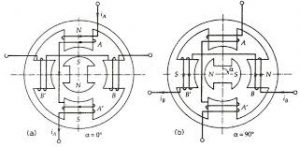Generally, you are going to need at last NEMA23 from 175oz/in upwards unless your machine is very small such as a CNC engraver. These are quite often used for making Printed Circuit Boards(PCB) and if you check the description they will say only for soft materials.

Choose the correct stepper size for your CNC router
The choice of a stepper motor that is not an appropriate size usually shows itself in several ways. When you undersize the size of the stepper motor, this results in unsatisfactory deceleration and acceleration, poor performance as well as excessive heat. Additionally, in extreme cases, the stepper motor will position improperly, lose pulses or stop working altogether when under high acceleration or deceleration, and heavy loading.
Overloading, on the other hand, causes the stepping motor to produce higher RFI/EMI as well as to run louder. Because of this, you may incur an extra cost for a driver and motor as well as more machine or panel space than is needed.
Furthermore, because this is an open-loop system, the matching of rotor-inertia to load-inertia is vital. This is especially regardless of whether an encoder is added, but the inertia mismatch can never exceed the magnitude order. Typically, a greater mismatch results in the stepper motor missing position, using excessive current, losing pulse, or in some cases stalling altogether
Conclusion
After going through this article, you now have an idea of what you need to consider to help you choose a stepper motor for your CNC router that is of an appropriate size. Consequently, you will get to benefit from an effectively working machine that meets all your needs.
